The best 5G phones in 2025
The best 5G phones deliver much faster downloads, lower latency and a lot more
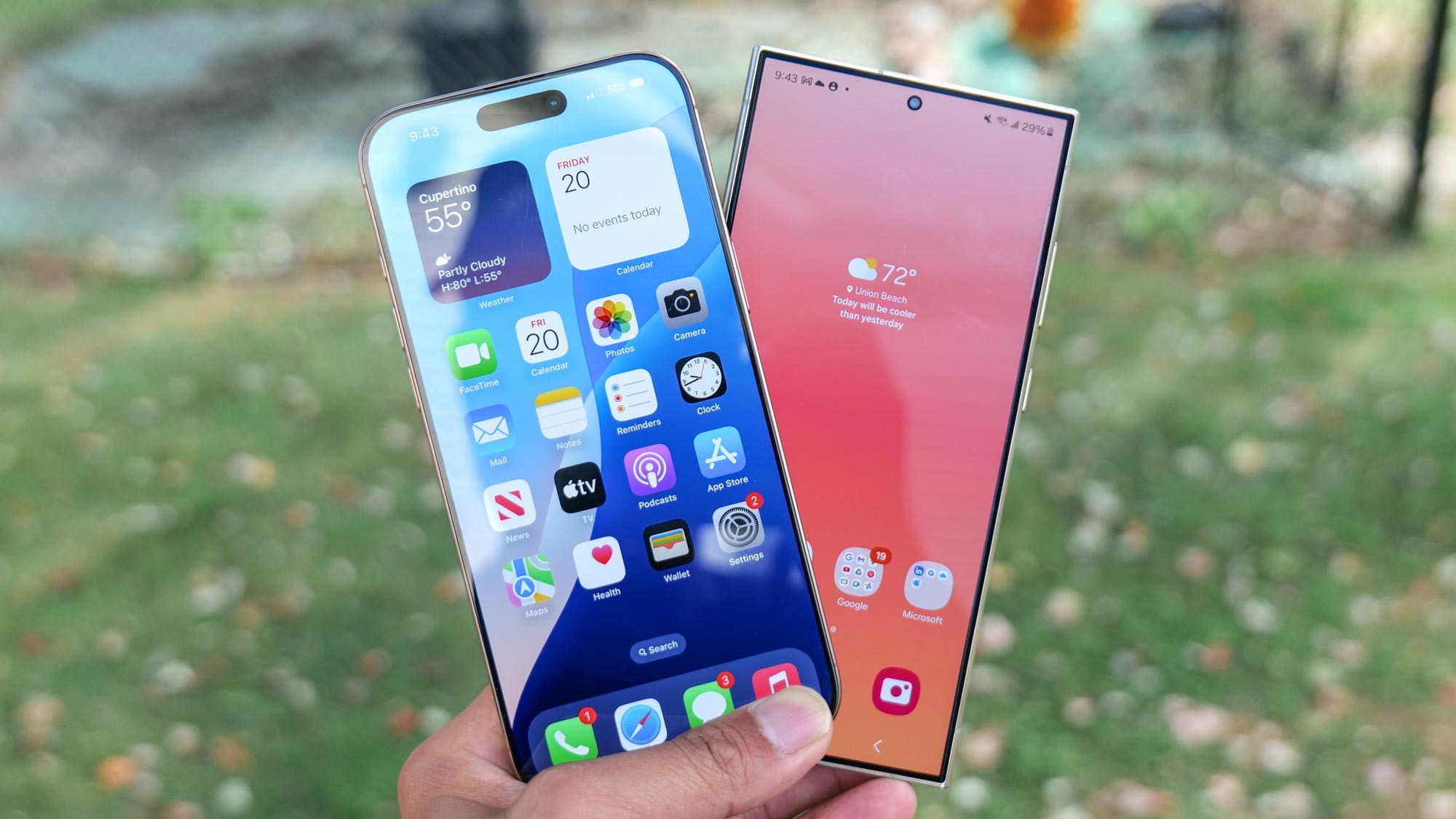
- The quick list
- Best 5G phone overall
- Best Android 5G phone
- Smartest 5G phone
- Best 5G value
- Best iPhone value
- Best 5G flagship for less
- Compact 5G flagship
- Best 5G foldable
- 5G value from Samsung
- Best low-cost 5G phone
- Best foldable value
- Samsung's cheapest 5G phone
- Choosing a 5G phone
- How we test 5G phones
A search for the best 5G phones essentially has become a search for the best phones overall. These days, any top phone is going to feature 5G connectivity. That not only means the latest flagships, but budget models as well.
Tom's Guide tests dozens of phones each year, and the ones that I don't review personally, I'm usually editing the reviews written by other people. So I'm very familiar with the latest trends in smartphones. Five years ago, as 5G networks were just getting their start, 5G-capable phones were hard to find; these days, it's harder to find a phone that doesn't connect to 5G.
That's largely because 5G coverage is farther reaching these days — another area I've covered for Tom's Guide in the last half-decade. T-Mobile has the largest network, with its 5G service reaching 330 million people — of those, more than 300 million can access the carrier's faster Ultra Capacity 5G service. Around 250 million people can access Verizon's fast Ultra Wideband 5G, and AT&T's 5G coverage has extensive reach, too. Even Boost Mobile — which is trying to establish itself as a nationwide carrier in the same conversation as the Big Three — says its 5G network covers 70% of the U.S. population.
In other words, no matter who provides your phone service, it's a pretty safe bet that your device will be connecting via 5G.
Our favorite 5G phones offer more than just speedier downloads. The best 5G phones also feature outstanding cameras, big displays and super-sized batteries that deliver all-day battery life. Here are the best 5G phones available right now to meet any budget, but make sure you check out the. newly-announced Galaxy S25 and Galaxy S25 Ultra — two new devices that may appear on this list soon.
The quick list
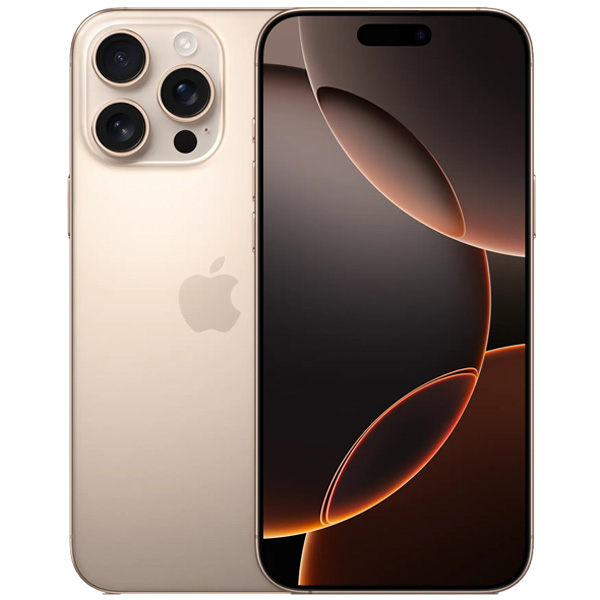
The best 5G phone overall
Apple's premium phone benefits from a high-performance A18 Pro chipset, longer battery life and the kind of camera improvements you'd expect from a new iPhone. But the iPhone 16 Pro Max also gains Apple Intelligence features, as Apple makes its initial push into adding AI capabilities to its phones.
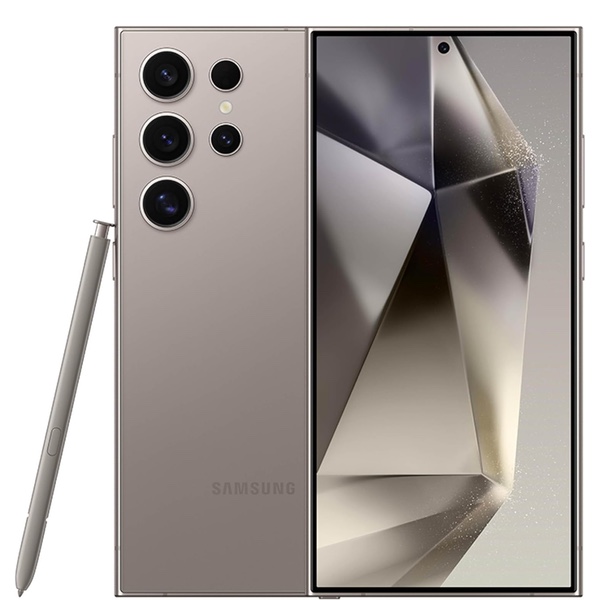
The best 5G phone for Android
The Snapdragon 8 Gen 3 powering the Galaxy S24 Ultra makes Samsung's priciest S24 model the Android phone to beat both in terms of performance and battery life. New Galaxy AI features deliver practical, time-saving solutions to real-world tasks, and the cameras remain excellent.
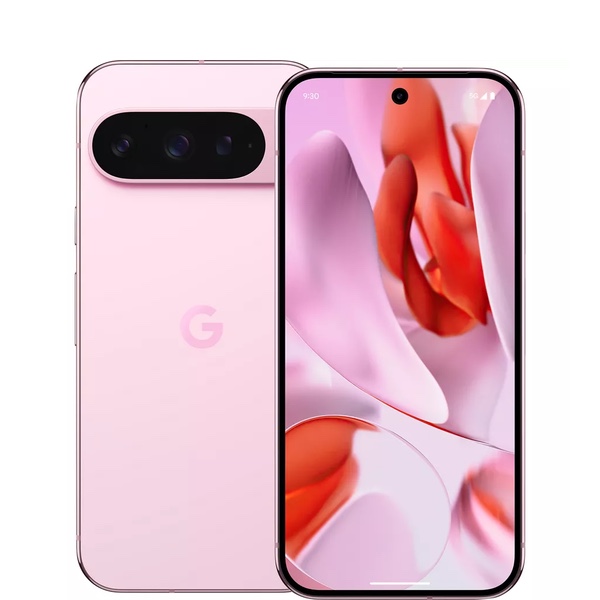
Smartest 5G phone
The Google Pixel 9 Pro introduces a Tensor G4 processor that introduces a number of new AI-powered capabilities while also managing power consumption better than before. Top-performing cameras complete the package.
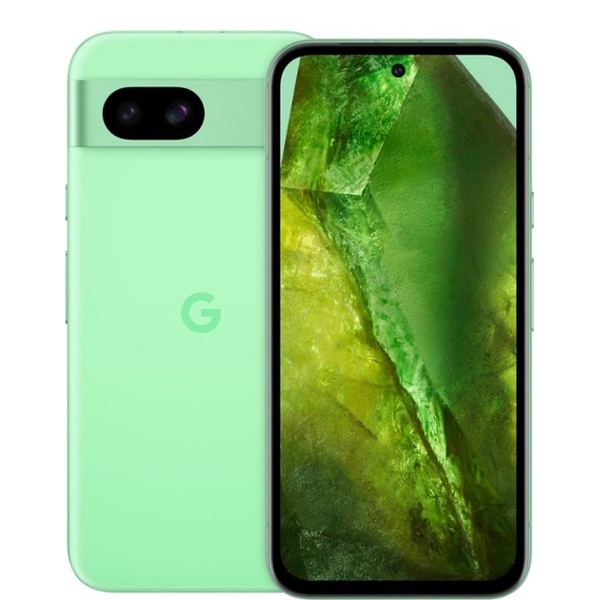
5G phone value
The Google Pixel 8a brings top-notch mobile photograph and some pretty impressive AI-features in an affordable package that costs less than $500. You also get brighter display and extensive software support for a 5G device that's hundreds of dollars cheaper than nearly every flagship phone.
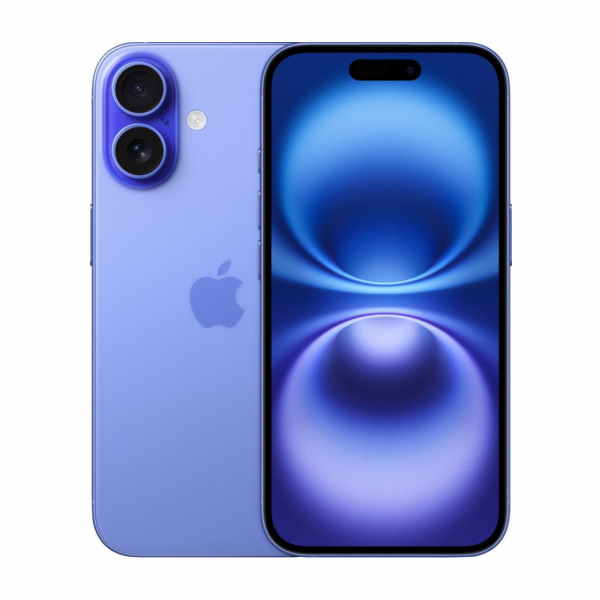
Best value iPhone
At $799, the iPhone 16 is the Apple flagship most of us can afford. Fortunately, Apple packs a lot of value into this device, including the A18 chipset that delivers strong performance and long battery life. Plus, the iPhone 16 supports the same Apple Intelligence features you'll find on more expensive iPhones.
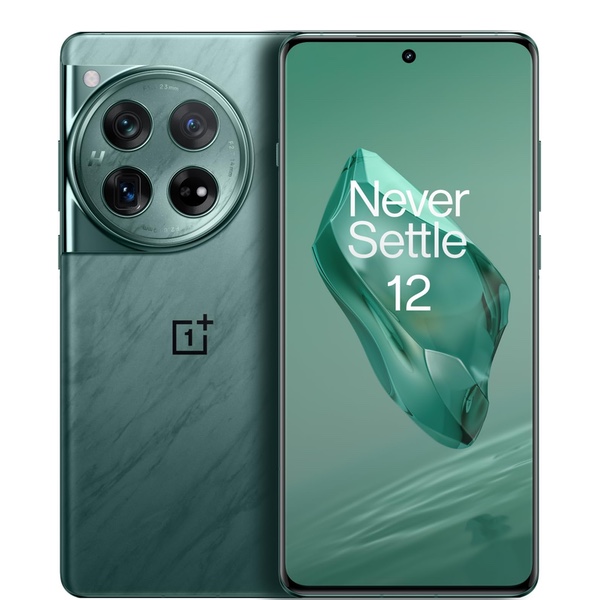
Best alternative 5G phone
You can get a OnePlus 12 for a couple hundred less than comparable phones from Samsung and Google, and you won't have to compromise on performance and photos. These are the best-performing cameras ever on a OnePlus phone, and this handset beats Samsung and Google handsets when it comes to battery life.
Load the next 6 products...
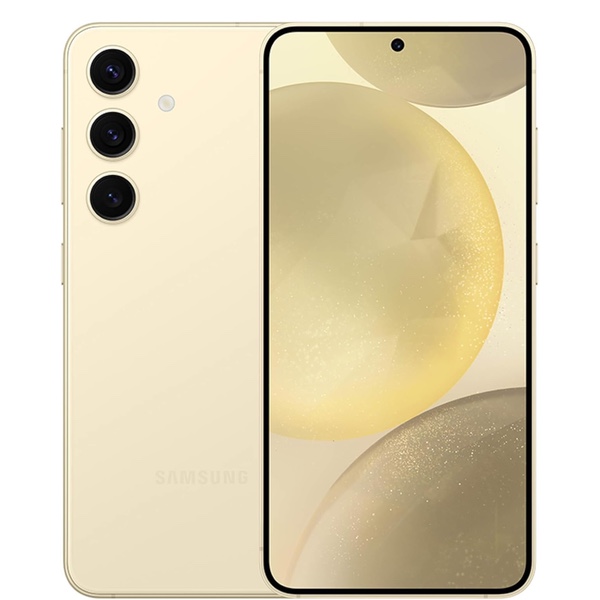
Samsung's affordable 5G flagship
The most affordable Samsung flagship has the same Galaxy AI features as the more expensive models, and the Snapdragon 8 Gen 3-powered version of the Galaxy S24 lasts a long time on a charge. You get a telephoto lens, too.
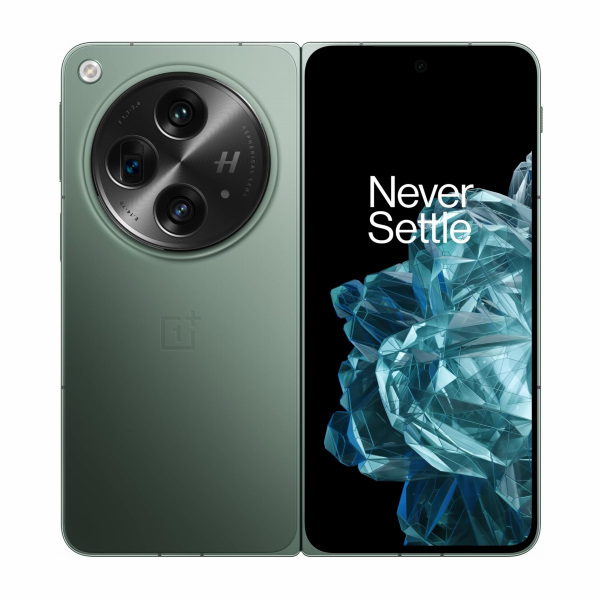
Best foldable 5G phone
The first foldable phone from OnePlus is also the best foldable phone you can buy. An excellent thin-and-light design plus the best multitasking features of any foldable make this a great choice if you're considering a 5G foldable.
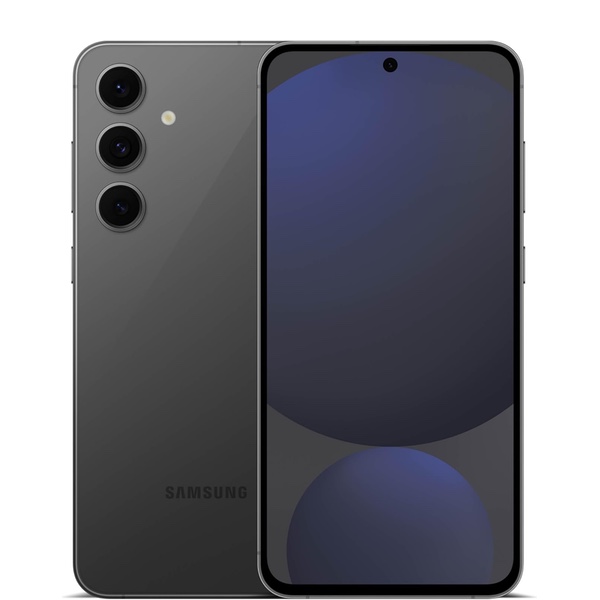
Best low-cost Galaxy AI phone
The Galaxy S24 FE gives you the chance to get a device that supports Galaxy AI without paying flagship prices. Not only that, but you also get a phone with a telephoto lens — rare for a $650 phone. It's the best value of any Galaxy phone in Samsung's lineup.
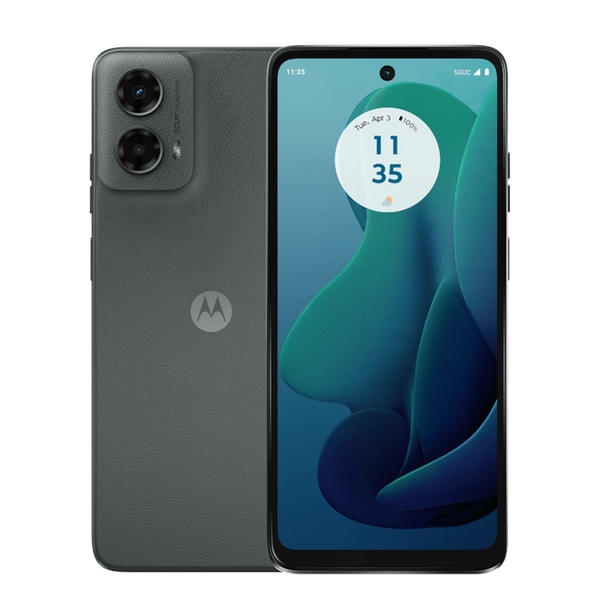
Best 5G phone under $200
5G phones no longer cost big bucks, as evidenced by the $199 Moto G 5G. You're going to make some compromises, but you'll still get a long-lasting phone with a stylish design that can keep you connected to 5G networks for a fraction of what other phones cost.

Best low-cost foldable
Foldable phones don't need to cost big bucks as the Motorola Razr (2024) brings a long-lasting battery and elegant design for less than $700. It's the flip phone to get if you want a foldable that doesn't break the bank.

Low-cost Samsung option
The midrange Galaxy A35 costs less than $400, but still offers a big, bright screen and support for the AI-powered Circle to Search feature. The cameras aren't as good as the Pixel 8a's, but Samsung's phone costs $100 less.
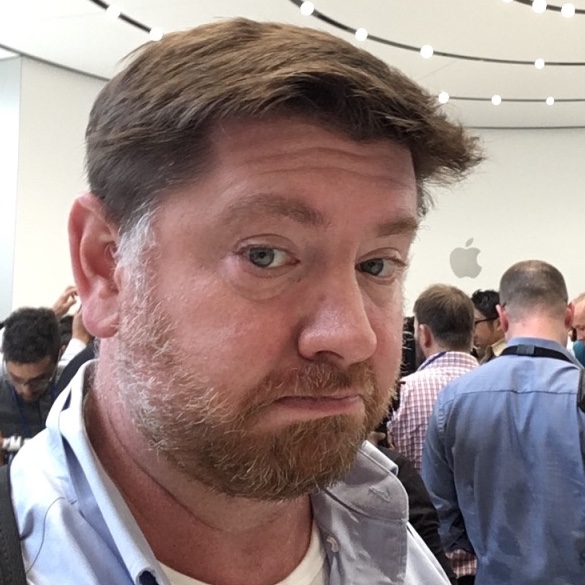
My name is Philip Michaels, and I've been with Tom's Guide since 2015, covering phones my entire time here. I'm now the managing editor of mobile coverage, overseeing all of our phone reviews along with our evaluations of various phone carriers in the U.S. 5G holds a place near and dear to my heart since I covered the launch of the new network for Tom's Guide, even dashing off to Chicago to test the first live 5G network in the U.S. back in 2019.. And yes, I'm already thinking about 6G networking, which should be arriving around 2030 or so.
The best 5G phone

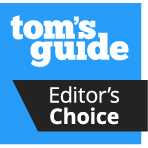
Specifications
Reasons to buy
Reasons to avoid
The iPhone 16 Pro Max delivers the biggest screen ever on an iPhone, with a 6.9-inch display that's expansive enough to handle any task you throw at it. While we found the iPhone 16 Pro Max to be bright and colorful, Google's Pixel 9 Pro phones had higher brightness ratings when we measured the screens with a light meter.
Apple managed to increase the screen size on its Pro Max model with only modest changes to the phone's dimensions compared to the iPhone 15 Pro Max. In fact, the new Pro Max is thinner than Samsung's Galaxy S24 Ultra and weights marginally less. That said, my colleague Mark Spoonauer did find the phone hard to handle without using both hands.
While the screen size is eye-catching, the big improvement with the iPhone 16 Pro Max involves the A18 Pro silicon powering the phone. Not only does this mean faster performance — the iPhone 16 Pro out-muscles Snapdragon 8 Gen 3-powered Android devices on speed tests — but it helps manage that power more efficiently. The iPhone 16 Pro Max posted an average time of 17 hours and 17 minutes on our battery test, which is the best result we've ever recorded for any iPhone.
In addition to fueling improved performance and battery life, the A18 Pro supports Apple Intelligence features. Having tested this suite of AI tools, I didn't find any must-have feature among the initial additions that arrived with iOS 18.1, with Apple Intelligence adding tools to help you write better messages, edit your photos and create more involving slideshows. Siri is also getting an overhaul, though that remains a work in progress. Apple Intelligence may be a nice-to-have feature at this point in time, but Apple will only add to it throughout 2025 and beyond, and the iPhone 16 Pro Max gives you a device that can support new features as they arrive.
A 48MP Fusion Camera cuts down on the lag between pressing the shutter button and capturing the image, while also focusing faster on whatever it is your shooting. The ultrawide lens gets a boost to 48MP for more detailed shots. When we tested the iPhone 16 Pro Max cameras head-to-head against the top phones from Samsung and google, Apple's phone produced the better shots, making it the phone to get if you value having a great camera phone.
The only reason to hesitate on buying an iPhone 16 Pro Max is its hefty $1,199 starting price, which matches what the iPhone 15 Pro Max cost. If that's too much, you could always turn to the $999 iPhone 16 Pro, which offer nearly every everything the iPhone 16 Pro Max does, only in a more compact form factor.
Read our full iPhone 16 Pro Max review.
The best 5G phone for Android
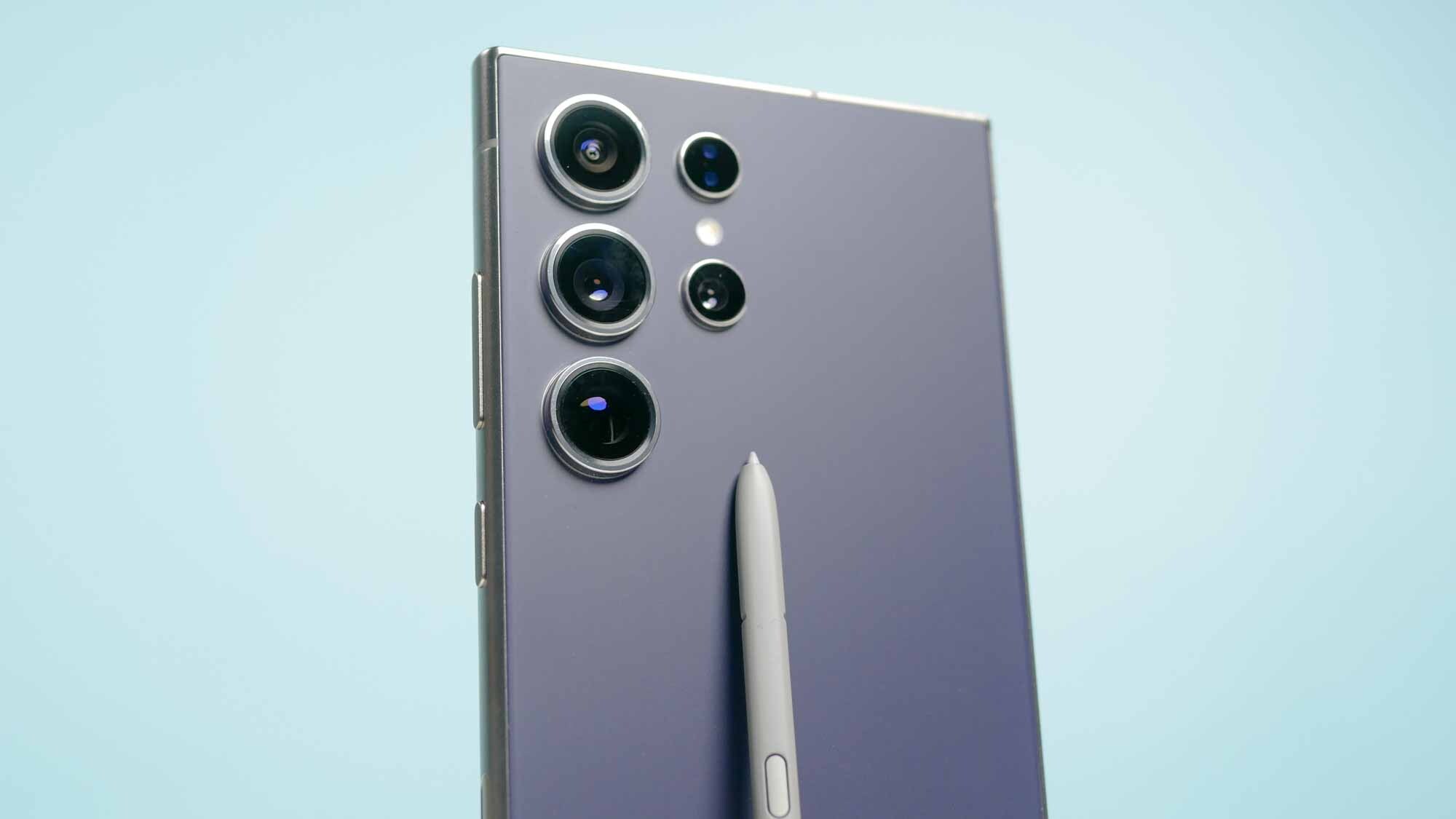

Specifications
Reasons to buy
Reasons to avoid
NOTE: The Galaxy S25 Ultra just got announced, so the S24 Ultra is about to be superseded, and likely disappear from our recommendations in favor of the new model.
Android users who want the best 5G phone should turn to the Galaxy S24 Ultra, which boasts impressive performance and very long battery life, thanks to the Snapdragon 8 Gen 3 chipset. This silicon outperforms the A17 Pro chipset powering the iPhone 15 Pro models on some benchmarks, and unlike other S24 models, the Ultra features Qualcomm's chip no matter here you live in the world.
There's more than just raw power on display here. The Galaxy S24 Ultra also offers top-performing cameras with sharper zooms than before (though in some respects, the decision to scale back the optic zoom on one lens to 5x from 10x feels like a step back). We're also impressed with the Galaxy AI features available on the Galaxy S24 Ultra, even if those capabilities also exist on cheaper S24 models and have shown up on older Galaxy S phones thanks to a software update.
The titanium frame adds to the sleek design of the Galaxy S24 Ultra, and seven years of software and security updates extend the value of this pricey phone. Even at $1,299, this is the best phone Samsung has to offer.
We think the iPhone 16 Pro Max is a better choice than the S24 Ultra — our iPhone 16 Pro Max vs. Galaxy S24 Ultra face-off breaks down why based on performance, battery life and camera output — but not everyone wants one of Apple's phones. If you're an Android user through and through, the Galaxy S24 Ultra is the best 5G option you can turn to.
Read our full Samsung Galaxy S24 review.
The smartest 5G phone
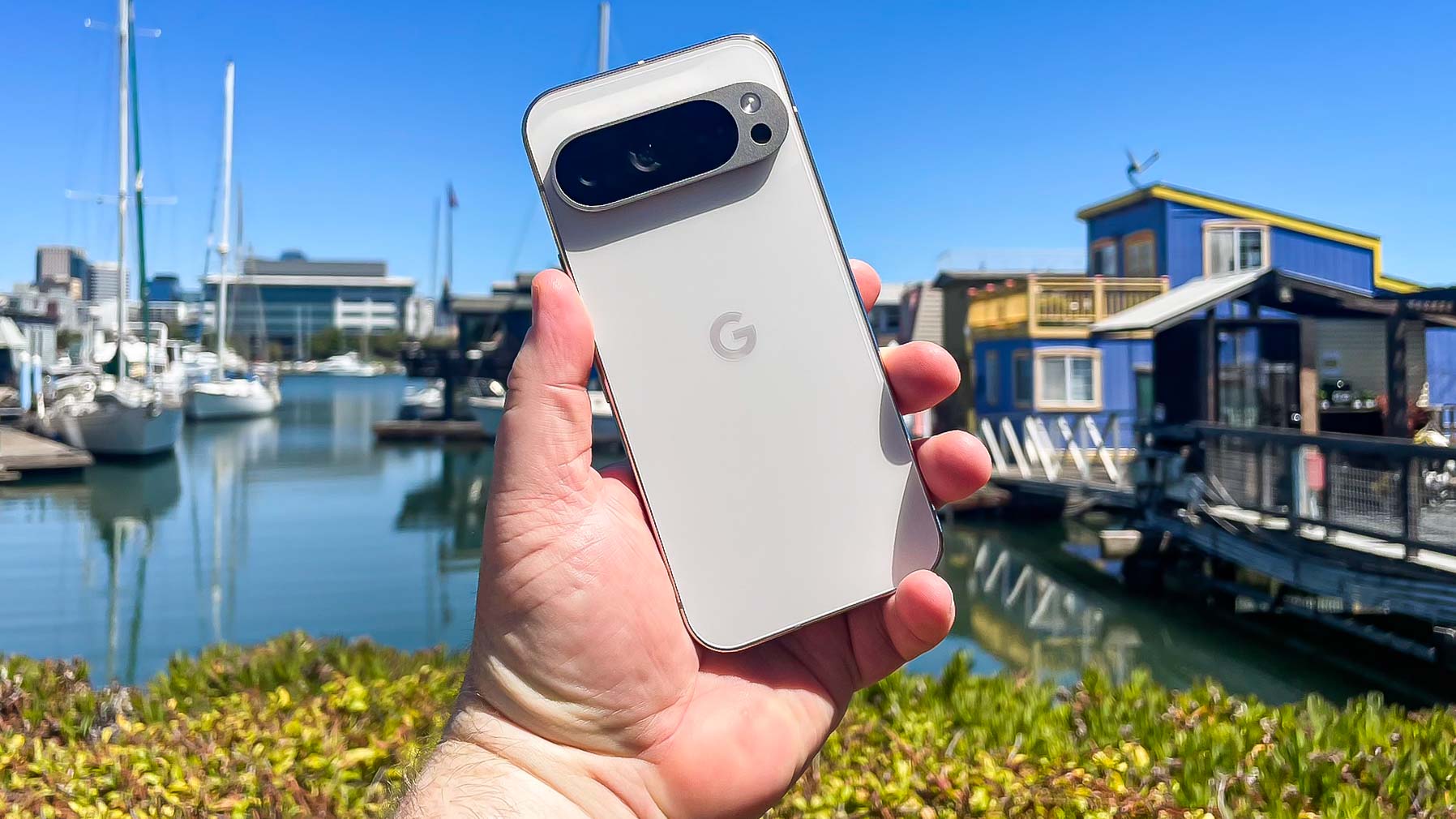
Specifications
Reasons to buy
Reasons to avoid
Samsung's Galaxy AI features impress, but Google's still the best at packing smart software features into its phones. The new Tensor G4 chipset that powers the Pixel 9 Pro introduces more AI features, with the best ones like Pixel Screenshots and Call Notes boosting productivity.
AI features also extend to the cameras, with an Add Me tool letting you insert yourself into group photos that you're capturing. Our testing produced mixed results, though a lot of that comes down to the photographer's ability to position people in a shot. A Reimagine feature works much more smoothly by letting you use AI to enhance specific parts of a photo.
The Google Pixel 9 Pro cameras continue to perform well, with Google's phone producing consistently better photos than the Galaxy S24 Ultra and iPhone 15 Pro in our head-to-head tests. That said, the cameras don't see significant hardware upgrades from the Pixel 8 series.
Google has made the Pixel 9 Pro more compact, with a 6.3-inch screen — to get a larger display, you'll need to pay up for the XL version. You're paying the same $999 that the larger Pixel 8 Pro cost. We also wish the Tensor G4 was a faster chip, but at least its power management features helped the Pixel 9 Pro last a long time on a charge — the first time in a long time that's happened with one of Google's phones.
Read our full Google Pixel 9 Pro review.
The best 5G phone value
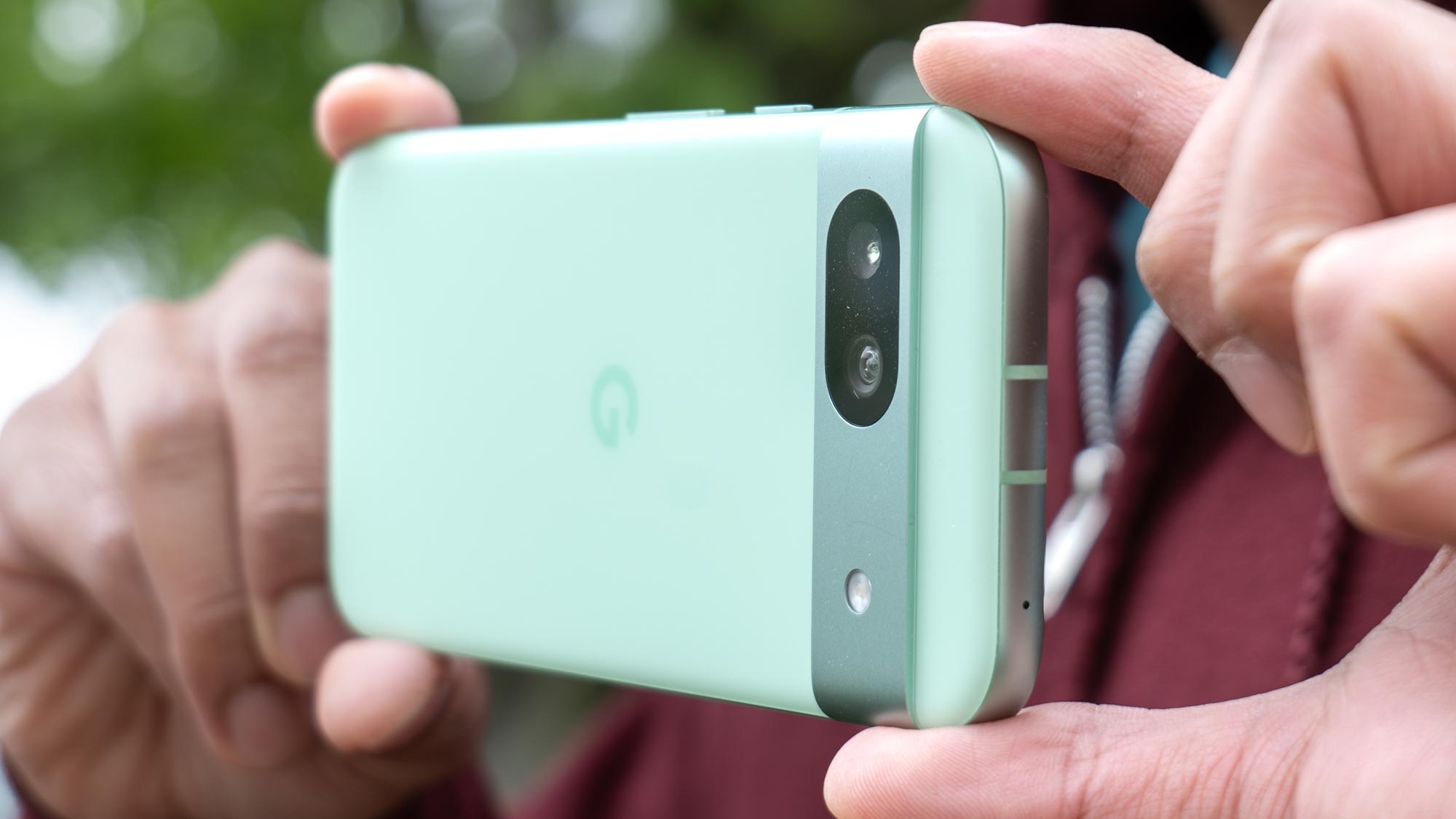
Specifications
Reasons to buy
Reasons to avoid
Google's A series Pixel phones have always been known for offering top-performing cameras for less, and that continues with the Pixel 8a. But this lower-cost midrange phone also delivers the best AI capabilities in a sub-$500 devices, matching many of the features you'll find on the Pixel 8. That's because the Pixel 8a uses the same Tensor G3 chipset so it can do things like support Circle to Search and swap in faces as part of the Best Take tool for improving group shots.
Camera improvements are fairly modest, but that's OK since the Pixel 8a still performs well when it comes to taking photos. You'll see bigger improvements in display brightness and battery life, which both top what you got from the previous model. Best of all, Google hasn't raised prices, keeping the Pixel 8a at $499 while also expanding software and security support to seven years.
Read our full Google Pixel 8a review.
The best iPhone 5G value
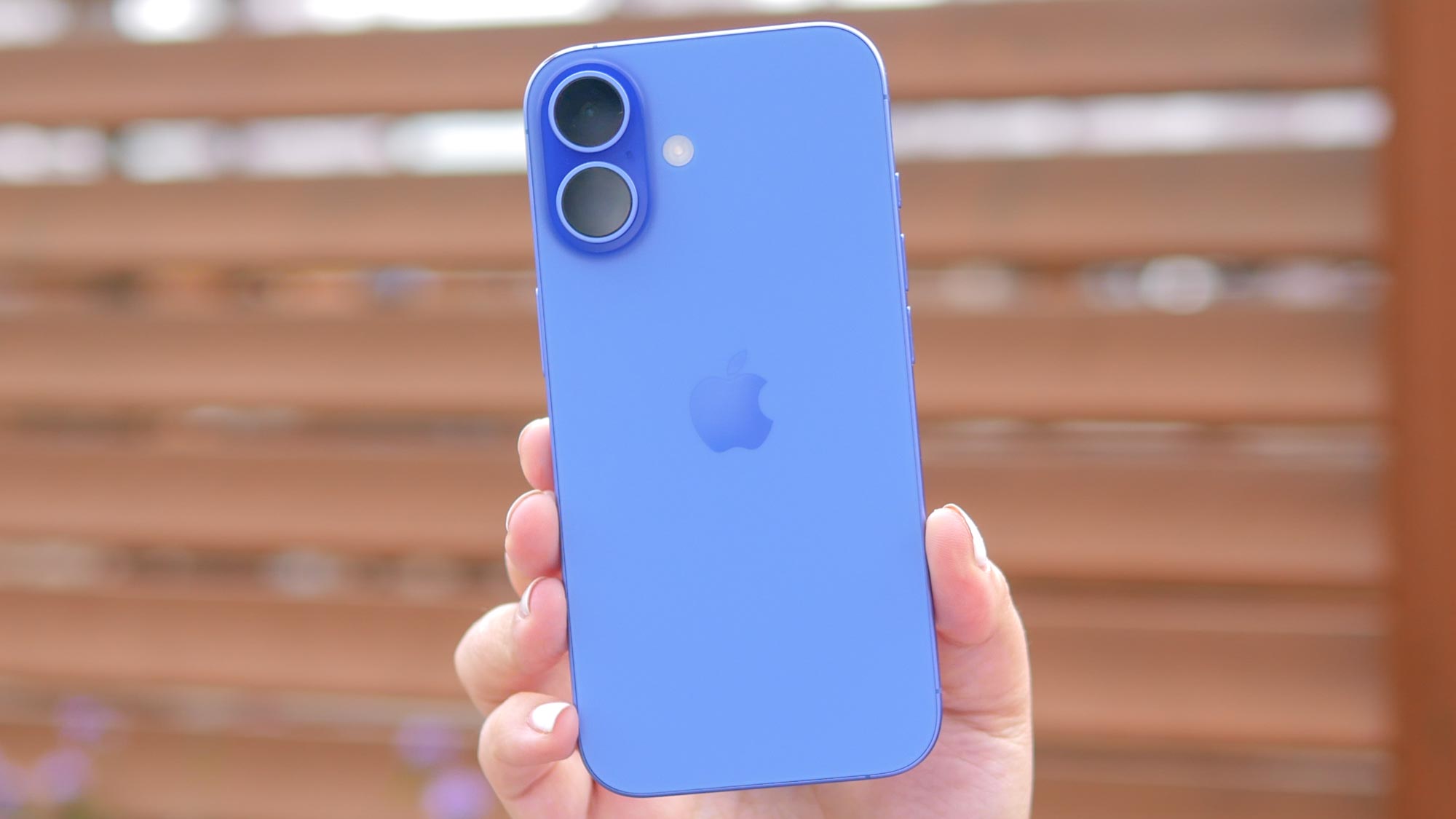
Specifications
Reasons to buy
Reasons to avoid
Don't think of the iPhone 16 as the Apple handset you have to settle for if you don't want to pay up for the Pro model. After years of lavishing lots of attention on its Pro phones, Apple has added enough features to the standard iPhone to make it a strong value in its own right. In fact, unless you really need a dedicated telephoto lens on your phone, you could argue that the iPhone 16 is the best iPhone in Apple's product lineup.
It helps that the iPhone 16 gains the Action button Apple added to the iPhone 15 Pro models the previous year while also picking up the same Camera Control button added to other iPhones this time around. Both buttons streamline common activities — the Action button can launch apps and control select functions while the Camera control button lets you easily launch and control the Camera app. That said, some of my colleagues found that Camera Control takes some time to get used to.'
Another important addition to the iPhone 16 is the A18 chipset. The past two iPhone releases, Apple has used older silicon in its entry-level flagships, but every iPhone 16 features an A18 chipset. (The Pro phones get a variant that has an extra core in its GPU.) That means speed that tops any Android phone, though Apple's phones still can't quite match the graphics performance of the Snapdragon 8 Gen 3.
The iPhone 16 also benefits from the power management features of the A18 system-on-chip, which helps the new phone improve upon the battery performance of the iPhone 15. The iPhone 16 did turn in the shortest results of any new model on our battery test, but its 12 hour and 43 minute time is still 2.5 hours better than the average smartphone.
As with any phone where you turn to the cheaper version, there are some tradeoffs with the iPhone 16 compared to Apple's more expensive models. But they're fewer and less significant this time around, making the iPhone 16 a wise purchase for people who don't care to spend big on their phones.
Read our full iPhone 16 review.
The best lower-cost 5G flagship
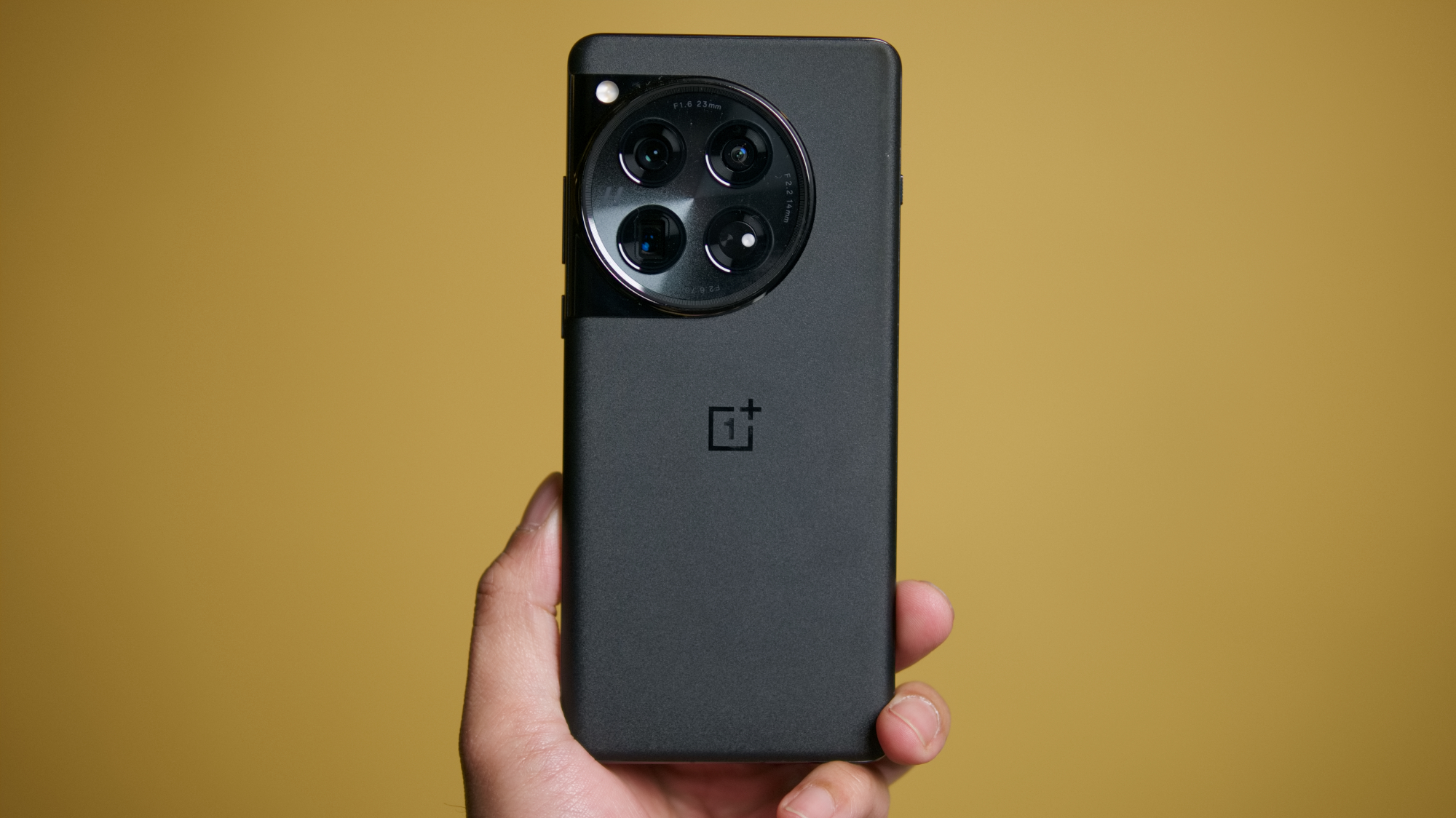
Specifications
Reasons to buy
Reasons to avoid
The OnePlus 12's time as the top flagship at OnePlus is growing short — the phone maker has already released the OnePlus 13 in China with a global rollout to follow in early 2025. So it may be best to wait for the newer model unless you can get the OnePlus 12 at a substantial discount from its usual $799 price.
If you do opt for the OnePlus 12, you're getting a device that deserves to be considered alongside the best Android phones that Samsung and Google have to offer. The same Snapdragon 8 Gen 3 chipset found in Samsung's latest flagships powers the OnePlus 12 meaning you get top performance, stellar 5G connectivity and a long-lasting device. (The OnePlus 12 actually beat the Galaxy S24 Ultra on our battery test.) Cameras — long a weak spot with OnePlus flagships — continue to improve to the point where the OnePlus 12 can produce photos that hold up well when compared to what the top camera phones can do.
The OnePlus 12 cameras still struggle in low light and you won't find the surplus of AI features introduced on other recent Android flagships. But this remains a good alternative for Android users who don't want to spend big on a high-quality phone.
Read our full OnePlus 12 review.
The best compact 5G flagship
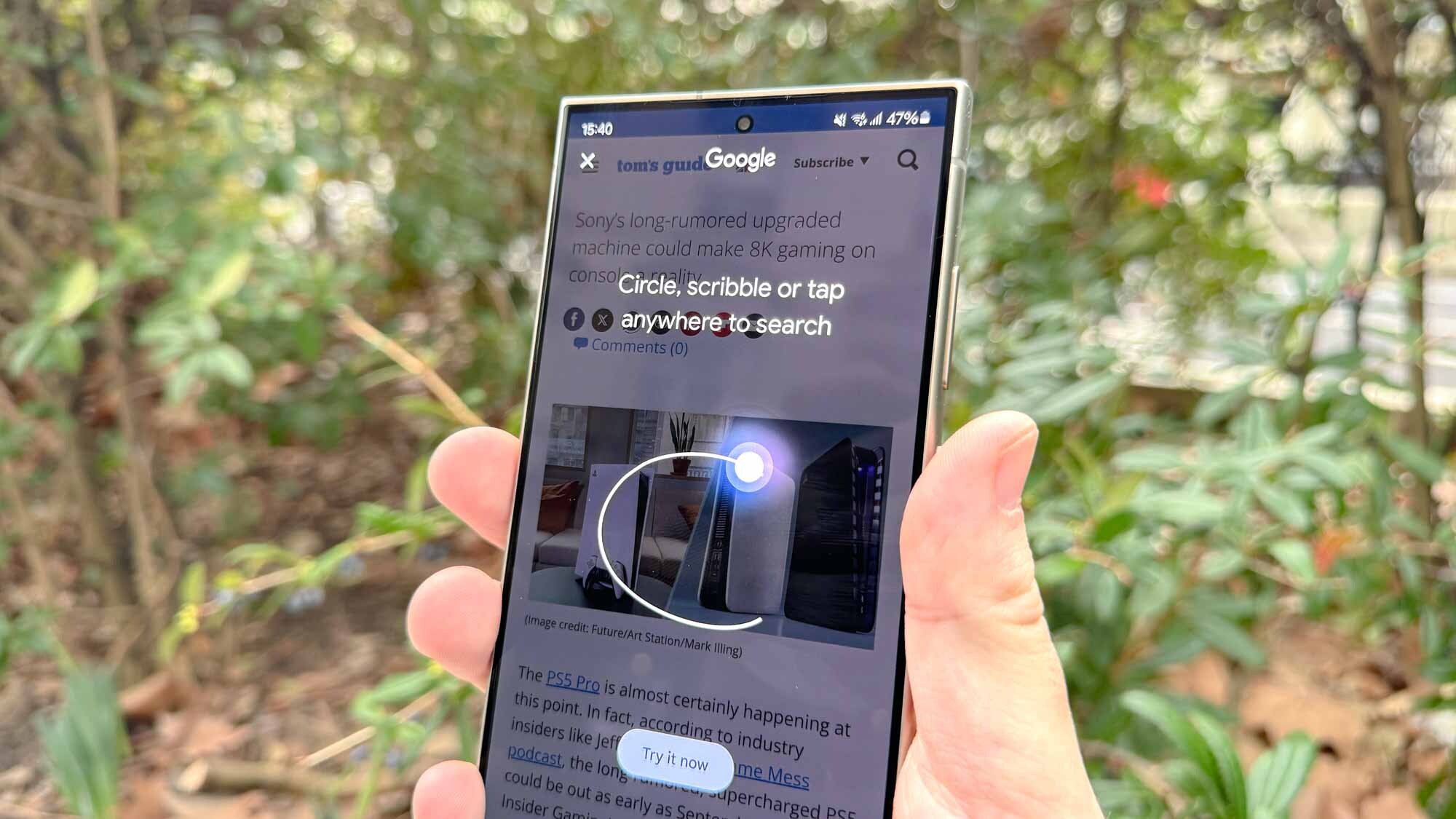
Specifications
Reasons to buy
Reasons to avoid
NOTE: The Galaxy S24 is no longer the latest model in its family, as the Galaxy S25 has appeared. Make sure to check out that device. before plumping for an S24.
All of the Galaxy AI features included on the Galaxy S24 Ultra can also be found on the Galaxy S24, which costs $500 less than its pricier counterpart. That means tools like Circle to Search, Chat Assist and generative photo editing can be yours at a much lower cost.
You'll also get a top-performing device, especially in North America, where the Galaxy S24 runs on the Snapdragon 8 Gen 3 system-on-chip. (In other parts of the world, the S24 features an Exynos 2400 chipset, which is a step slower according to our Galaxy S24 benchmarks.) In addition to benchmark numbers that are better than the iPhone 15's results in some areas, the Galaxy S24 also lasts nearly 13.5 hours on a charge according to our battery test
The S24 retains the compact design of previous entry-level Samsung flagships, and it's also one of the rare $799 phones to include a telephoto lens. It's a great choice if you don't want to spend a lot of money on a top 5G flagship phone.
Read our full Samsung Galaxy S24 review.
Best 5G foldable
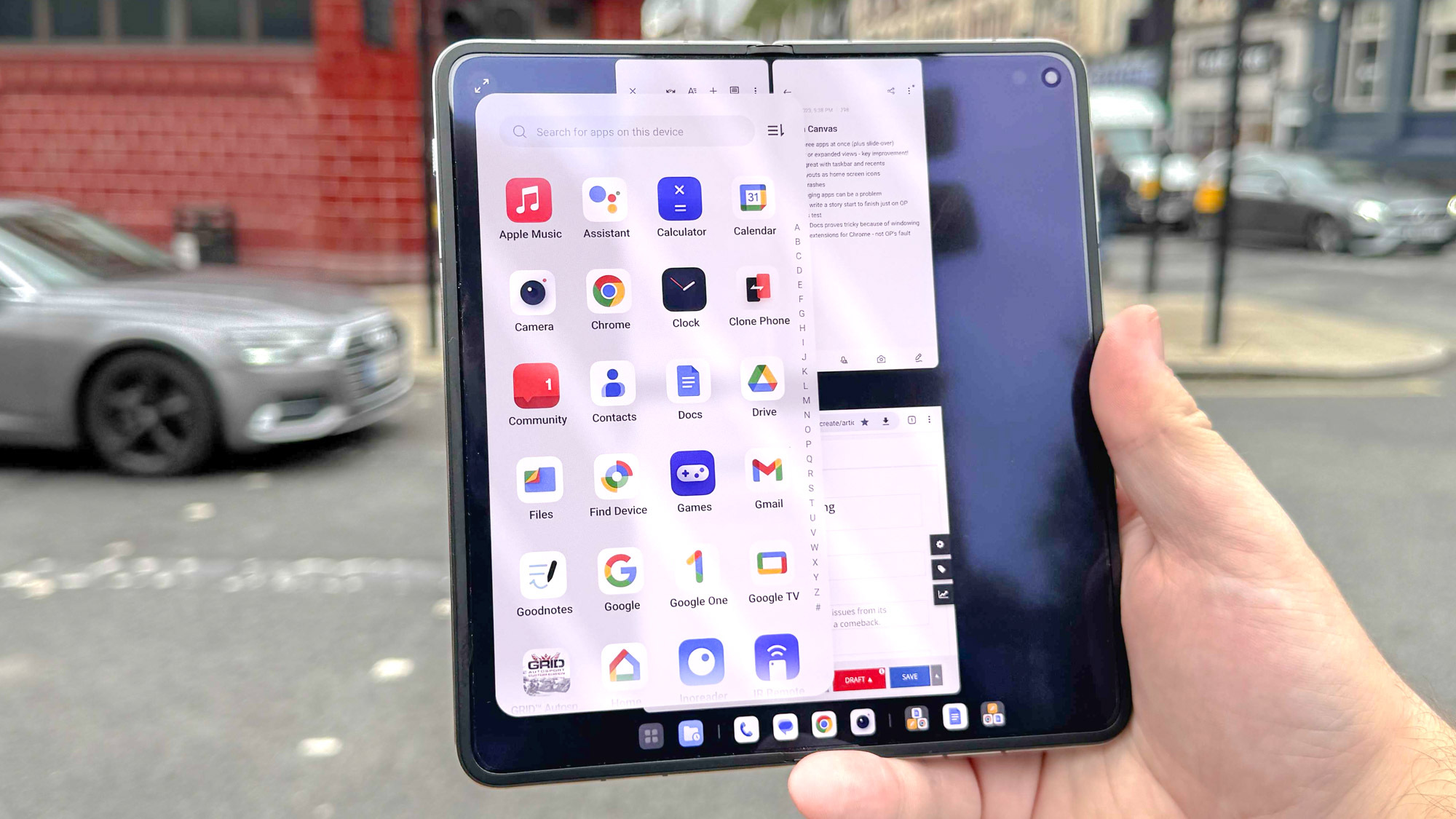
Specifications
Reasons to buy
Reasons to avoid
Even with Samsung releasing an impressive Galaxy Z Fold 6 this summer, the OnePlus Open remains the best foldable phone overall and a great 5G option if you want a super-sized display. This phone opens up to reveal a larger 7.82 internal display, but a thin design makes this a lot skinnier than rival foldables.
We're particularly impressed with Open Canvas, OnePlus' approach to multitasking on your foldable. It lets you run three apps at once, and you can dynamically shift your view as you switch from one app to the other. You can also save up to nine multi-app presents to really kickstart your multitasking.
At $1,699, the OnePlus Open cost less than similar foldable phones, especially after a price hike brings the Z Fold 6's cost to $1,899.
Read our full OnePlus Open review.
The best Samsung 5G value

Specifications
Reasons to buy
Reasons to avoid
Samsung treats its FE, or Fan Edition, model as a stripped-down, lower-cost variation on its Galaxy S flagship. But you can be forgiven if you consider the Galaxy S24 FE to be a full-fledged flagship.
The biggest changes from the rest of the Galaxy S24 lineup are the chipset Samsung uses — an Exynos 2400e which proved to be a little off the pace set by the Galaxy S24 and its Snapdragon 8 Gen 3 silicon in our testing. That also meant more modest battery life than the rest of the S24 lineup, with the S24 FE lasting around 11.5 hours on our batter test — about 90 minutes bette than most smartphones. We didn't notice too much of a lag when using the S24 FE, so this is probably a trade-off all but the most demanding users can live with.
In addition, the Galaxy S24 FE has a lower resolution telephoto lens than the Galaxy S24. But the point remains — there is a telephoto lens. Most of the time, you have to pay $700 or more to get that feature on your camera phone, and the S24 FE's camera proved adept at zooms. We did find the selfies captured by the front camera to be a little weak compared to similarly priced devices.
Notably, the Galaxy S24 FE supports the same Galaxy AI features found on the pricier S24 flagships. That puts capabilities like Circle to Search the Portrait Studio image generation tool in the palm of your hand for $150 less than what you'd pay for the same experience on a Galaxy S24. That alone justifies any trade-off you'd have to make to get your hands on this very capable 5G device.
Read our full Samsung Galaxy S24 FE review.
The best low-cost 5G phone

Specifications
Reasons to buy
Reasons to avoid
You'll find more capable phones than the Moto G 5G, but it's impossible to find a better phone for less than $200. It also goes to show how affordable 5G devices have become.
You'll get stripped-back features with the Moto G 5G — just a main camera and a dedicated macro lens, plus one of Qualcomm's less powerful chipsets. But even with those compromises, the Moto G 5G takes decent photos for a phone this price and it lasts longer than more expensive handsets on our battery test. It also has a stylish design that helps hide its budget phone origins.
Read our full Moto G 5G (2024) review.
Best foldable 5G phone value

Specifications
Reasons to buy
Reasons to avoid
We were fans of the 2023 edition of the Motorola Razr, though that foldable phone made some compromises to deliver a low price tag. The Motorola Razr (2024) keeps the price at $699, while also making considerable improvements to Motorola's budget flip phone.
The outer display, once just a notification strip, is now a helpful 3.6-inch panel that lets you do more without having to flip open the phone. When you do use the main 6.9-inch screen, you'll notice that it's much brigher than its predecessor. And while some foldables struggle with battery, the Razr has power management down, lasting a little more than 14.5 hours in our battery testing.
The cameras underwhelm a little, and we wish Motorola promised longer software support. But this is a still a fine phone, with color options that will appeal to fashion-forward users.
Read our full Motorola Razr (2024) review.
Best low-cost Samsung 5G phone

Specifications
Reasons to buy
Reasons to avoid
If the Galaxy S24 FE is still a little too expensive for your budget, consider Samsung's midrange Galaxy A phones, which still manage to pack a few premium features into a device that costs hundreds less than the Galaxy S flagships. The current model, the Galaxy A35, maintains Samsung's recent trend of delivering more for your money.
The phone's standout feature is a big 6.6-inch OLED display that gives you ample space for browsing and watching videos. The screen's pretty bright, too, measuring 1,317 nits in our testing when many midrange phones struggle to reach 1,000 nits. Watching videos on the Galaxy A35, I found the screen to be more colorful than what I saw on the Pixel 8a, the A35's closet competitor.
Camera comparisons with the Pixel 8a did not turn out in the Galaxy A35's favor, as I learned after a 200-photo shootout involving the Google and Samsung phones. That said, the Galaxy A35 produces solid photos, even it struggles with shadows and low-light situations. You get a dedicated macro lens to go with the main and ultrawide cameras, and not a telephoto lens, but good luck finding one of those on a phone that costs less than $400.
The Exynos 1380 chipset used by the Galaxy A35 is the same one found in last year's Galaxy A54, so you're not getting cutting-edge performance — just enough power to handle standard tasks rather easily. That said, you will find support for the AI-powered Circle to Search feature that lets you look up things on the Galaxy A35 just by circling or tapping an image.
You give up a few flashy features if you opt for the Galaxy A35, but the lower price may be worth it to some shoppers.
Read our full Samsung Galaxy A35 review.
How to choose the best 5G phone for you
When looking for a 5G phone, you'll want to consider which wireless carrier will be providing your cell phone service. Different service providers are taking different approaches to their 5G rollouts.
Verizon, for example, placed an initial emphasis on mmWave-based technology, so if you wanted phone service from Big Red, you had to make sure that your 5G phone could connect to mmWave towers; Verizon is in the process of expanding that coverage through C-Band 5G, which most phones support. Likewise, while T-Mobile and AT&T have a few mmWave deployments, the vast majority of their network relies on sub-6GHz technology for initial coverage. That's not as fast as mmWave, but it covers a wider area. (AT&T is expanding its mmWave-based coverage, though, for faster performance.)
In its July 2024 report on mobile performance in the U.S., OpenSignal gives T-Mobile top marks for 5G download speed while saying that the carrier remains "untouchable" for 5G availability; Verizon has the faster 5G upload speeds. A Rootmetrics report covering the first half of 2024 ranks Verizon as the best for 5G experience, including speeds and reliability, while T-Mobile is tops for availability.
Apart from what 5G networks a phone supports, the criteria for picking a 5G phone is about the same as it would be for any handset. Consider the processor, screen size, cameras and other features. Battery is especially important — 5G can draw some serious power, and you'll want a phone that's able to handle the added demands on its battery.
Price remains an important distinguishing factor, and it's going to get more so as lower-cost 5G phones roll out later this year. In 2019, you had to pay anywhere from $700 to $1,200 for a flagship 5G phone. Even with the Galaxy Z Fold 6 starting at $1,899, the price range for 5G phones has begun to fall with a rapidly increasing number 5G models available for $500 or less, with at least one device in our best 5G phone rankings costing less than $200.
How we test 5G phones
We test 5G phones the same way we test any phone we review. At this point in 5G's evolution, we merely confirm that a 5G phone can connect to a carrier's 5G network. We don't run performance testing for 5G speeds, as those say more about a carrier's network than the phone itself. Also, 5G performance can vary widely depending on your location.
As for other tests, we rely on such synthetic benchmarks as Geekbench 6 and 3DMark Wild Life Unlimited to measure graphics performance. These tests allow us to compare performance across iPhones and Android devices. We also run a real-world video transcoding test on each phone using the Adobe Premiere Rush app and time the result.
To measure the quality of a phone's display, we perform lab tests to determine the brightness of the panel (in nits), as well as how colorful each screen is (DCI-P3 and sRGB color gamut). In these cases, higher numbers are better. We also measure color accuracy of each panel with a Delta-E rating, where lower numbers are better and score of 0 is perfect.
One of the most important tests we run is the Tom's Guide battery test, which has become especially important for 5G phones given how power-hungry they are. We run a web surfing test over 5G at 150 nits of screen brightness until the battery gives out. In general, a phone that lasts 10.5 hours or more is good, and anything above 14 hours makes our list of the best phone battery life.
We also perform camera testing, comparing shots taken by each phone we test with similar phones. This part of our testing is less relevant to our 5G phone evaluations, though.
For more information on phone testing, check out our how we test page for Tom's Guide.
Sign up to get the BEST of Tom's Guide direct to your inbox.
Get instant access to breaking news, the hottest reviews, great deals and helpful tips.
Philip Michaels is a Managing Editor at Tom's Guide. He's been covering personal technology since 1999 and was in the building when Steve Jobs showed off the iPhone for the first time. He's been evaluating smartphones since that first iPhone debuted in 2007, and he's been following phone carriers and smartphone plans since 2015. He has strong opinions about Apple, the Oakland Athletics, old movies and proper butchery techniques. Follow him at @PhilipMichaels.
-
ashleydent I like the Samsung Galaxy S20 plus, but I am also thinking that 4 G phones could not work properly. There is network issue almost all the time. What good 5G will do?Reply

